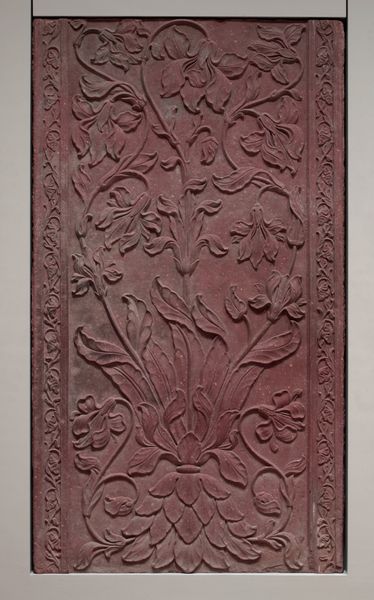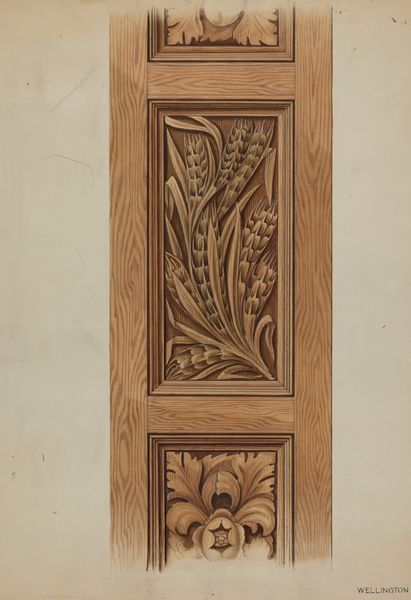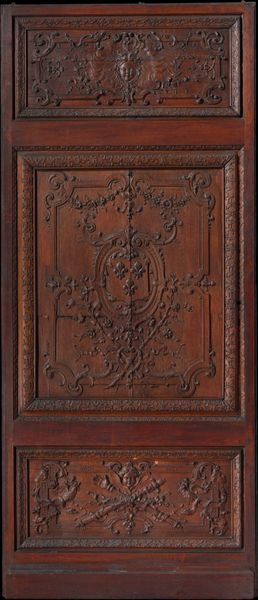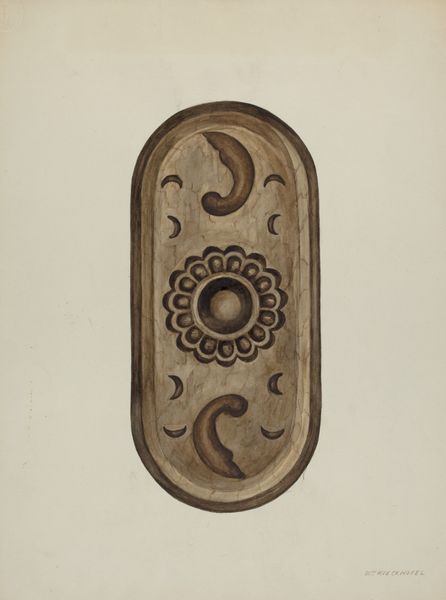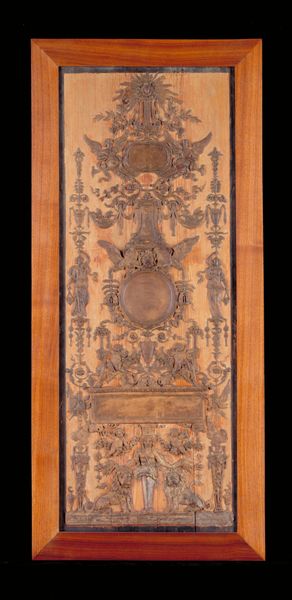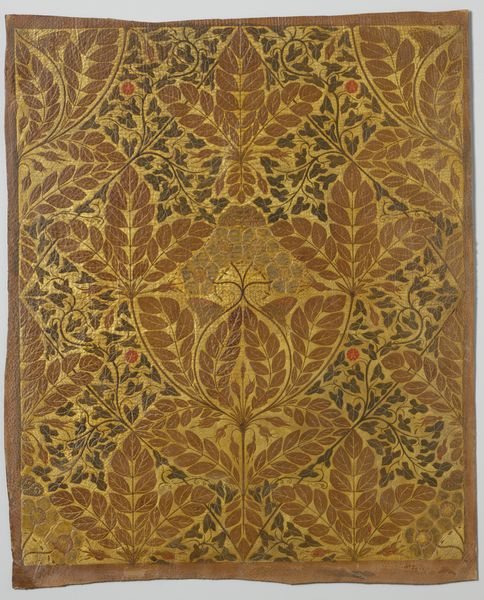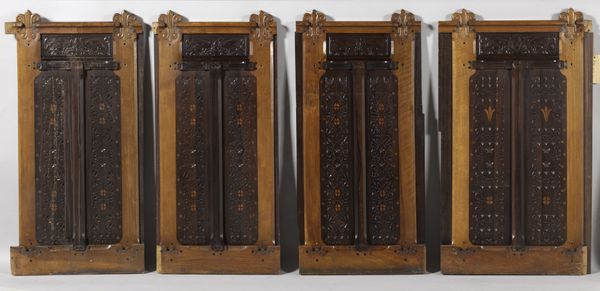
Decorative paneling from the Palace of Westminster 1840s - 1850s
0:00
0:00
Dimensions: Overall (confirmed): 28 3/8 × 14 1/4 × 13/16 in. (72.1 × 36.2 × 2.1 cm)
Copyright: Public Domain
Curator: This detailed panel, believed to be from the 1840s or 1850s, once graced the Palace of Westminster. It's attributed to Augustus Welby Northmore Pugin and offers an intimate glimpse into the decorative arts of the Gothic Revival. Editor: The first thing that strikes me is the sheer intricacy. Every leaf, every curve in that twisted central column, seems deliberate and refined. It really exudes a feeling of old-world craftsmanship, doesn’t it? Curator: Indeed. The repetitive use of foliate motifs speaks to the visual language of the medieval period, doesn’t it? Foliage represented growth and regeneration, connecting the physical structure of a building with the natural world and, symbolically, to a sense of continuous spiritual renewal. Editor: Right, but consider the context. The Gothic Revival, in many ways, was about more than aesthetics; it represented a longing for a supposedly more morally upright, even divinely sanctioned past, versus the disruptive industrial present. The decorative arts became deeply entwined with societal aspirations and idealized national identity. Curator: An insightful observation. Think about Pugin himself. He believed that Gothic architecture was inherently Christian, a visual embodiment of moral principles, contrasting starkly against what he saw as the decadence of classical styles. Editor: And how that philosophy played out politically and socially. Who had access to this supposed moral and cultural authority encoded within these grand structures? The design served a specific agenda rooted in class, colonialism and exclusion. It prompts questions about which past is deemed worthy of revival, and for whom. Curator: Well, looking at how motifs borrow from nature with interlaced and layered effects, I believe, in this piece, there is evidence of cultural memory speaking through the material and form. The detailed wood textures give the viewer a psychological space that bridges temporal and stylistic traditions, echoing emotional elements rooted in natural forms. Editor: It makes one wonder, how we choose to reflect the symbols from that past and carry them on into a different and more just future? It's a potent reminder that no art exists in a vacuum. Curator: Absolutely. Pugin’s decorative panel reveals not just the visual tastes of an era but its enduring dialogue with the medieval era. Editor: Exactly, by viewing historical design through a contemporary, intersectional lens, the piece allows us to interrogate our current values and the structures upholding them.
Comments
No comments
Be the first to comment and join the conversation on the ultimate creative platform.

